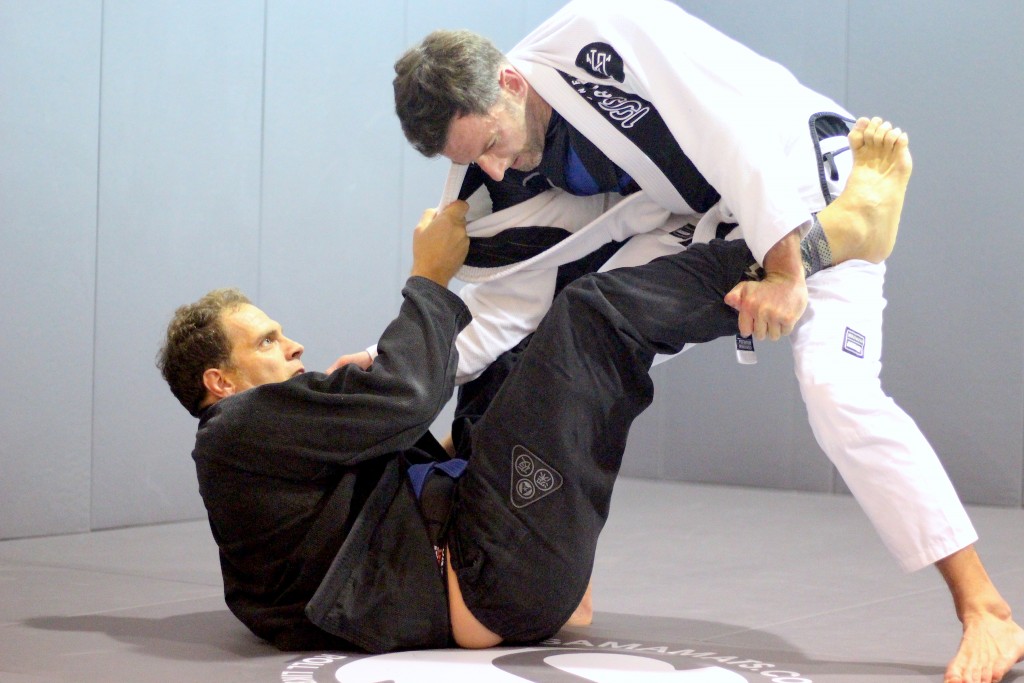A Simple Way To Develop Water-Tight Defences
I remember when Alex started training Jiu Jitsu. He was athletic, good at scrambling, and had the heart of a lion.Because of these attributes, if he got on top, he would often catch his training partners in submissions or
However, the moment he got stuck on his back defending, he turned from a mat monster into something more like Bambi skating on ice. His arms and legs would be everywhere, and he’d try and bench press his partners off instead of using a solid technique.
Inevitably his opponents would pass his defences like butter and end up in a strong attacking position.

And at some point in your Jiu Jitsu journey, I’m sure you’ll have experienced this too. You got stuck on the bottom, and no matter how hard you fight your opponent breaches your defences and squash you like a bug.
Often the problem is not your ability to sweep or submit your opponent, instead, the problem is you are exposing your defences and making yourself vulnerable to attacks
A few years ago, I noticed this was a common problem in my beginner students. So set about creating a way to help teach them basic positional defence and guard recovery.
Enter The Egg Drill
After a little trial and error, the Egg was born (maybe laid is apter)
The fundamental principle behind the egg is to create a defensive shell. To do this you keep your elbows and knees tight to your body, and your chin tucked.
If you do this correctly, it becomes incredibly difficult for your partner to attack you regardless of the positionthey are in plus they will find it tough to stabilise any dominant position.
Now, before we go any further, this is just a drill or concept. It is not supposed to be specific technique, and if you’re sparring I would not advise you using this as your primary form of attack
However, if you are continually getting your guard passed or easily submitted, practising this drill will be of great benefit to you.
Essentially, there are three parts to this drill with each part building on the last. The drill starts by teaching you how to keep your defences tight, then progresses with how to recover guard, and finishes with how to you can use the concept in sparring situations.
Below you’ll find the thought process behind each part of the drill and video outline how to perform it.
Part 1: Understanding The Egg
The first part of the drill is simply getting used to keeping a tight defensive and demonstrate how easy it can be. To do this, you have to keep your elbows and knees tight to your body and keep your chin tucked in tight.
There should be no space for your partner to get inside of the frame and they shouldn’t be able to separate your limbs from your body.
When you can do this effectively, it becomes very hard for you opponent to set up any submission opportunities or stabilise a dominant position.
The video below shows how to perform part 1 of the Egg drill. The first time you do this, it’s a good idea to start slowly and gradually increase the pressure as your partner develops the defensive capabilities.
Part 2: Defending The Egg
Once you get comfortable with the defensive position, the next step is to stop them getting around your guard.
It is impossible for your opponent to be attacking both sides of your body at once. Consequently, you can use the side they’re not attacking to defend your opponents pass attempts or recover guard.
The second part of the drill is the start of integrating the Egg concept into sparring. Check out the video below to see exactly how to do part 2 of the drill.
Part 3: Opening The Egg
Obviously, keeping your hands connected to your shins and your legs tucked into your body isn’t an effective way to play Jiu Jitsu. Consequently, the final part of the drill is all about how you use the Egg concept within your Jiu Jitsu.
The video below shows how to perform part 3 of the Egg drill.
How To Become One With The Egg
Like almost technique or concept in Jiu Jitsu, you need to practice the Egg to make it instinctive and be able to use it when you need to.
However, this is relatively easy. Simply take some time before or after your regular Jiu Jitsu training and practiceeach of the drills in order.
A short training plan (less than 15 minutes) could look something like this.
The Egg Part 1: 2 x 1 min rounds (alternate attacker and defender)
The Egg Part 2: 2 x 1 min rounds (alternating)
The Egg Part 3: 2 x 1 min rounds (alternating)
Remember, gradually increase the intensity as your partner improves, and if your partner is struggling to take the intensity back a notch.
If you did this plan for a month I can guarantee your guard retention and defence would increase dramatically. This short training plan also at as a great warm up for any guard training or defensive work.
If you enjoyed this article or found it useful, leave a comment below and let me know. I always appreciate the feedback.

To get your FREE copy of Performance Drilling and discover how to train like a world champion click the button below.

